News
18 Nov 2021
Acoustic Modelling
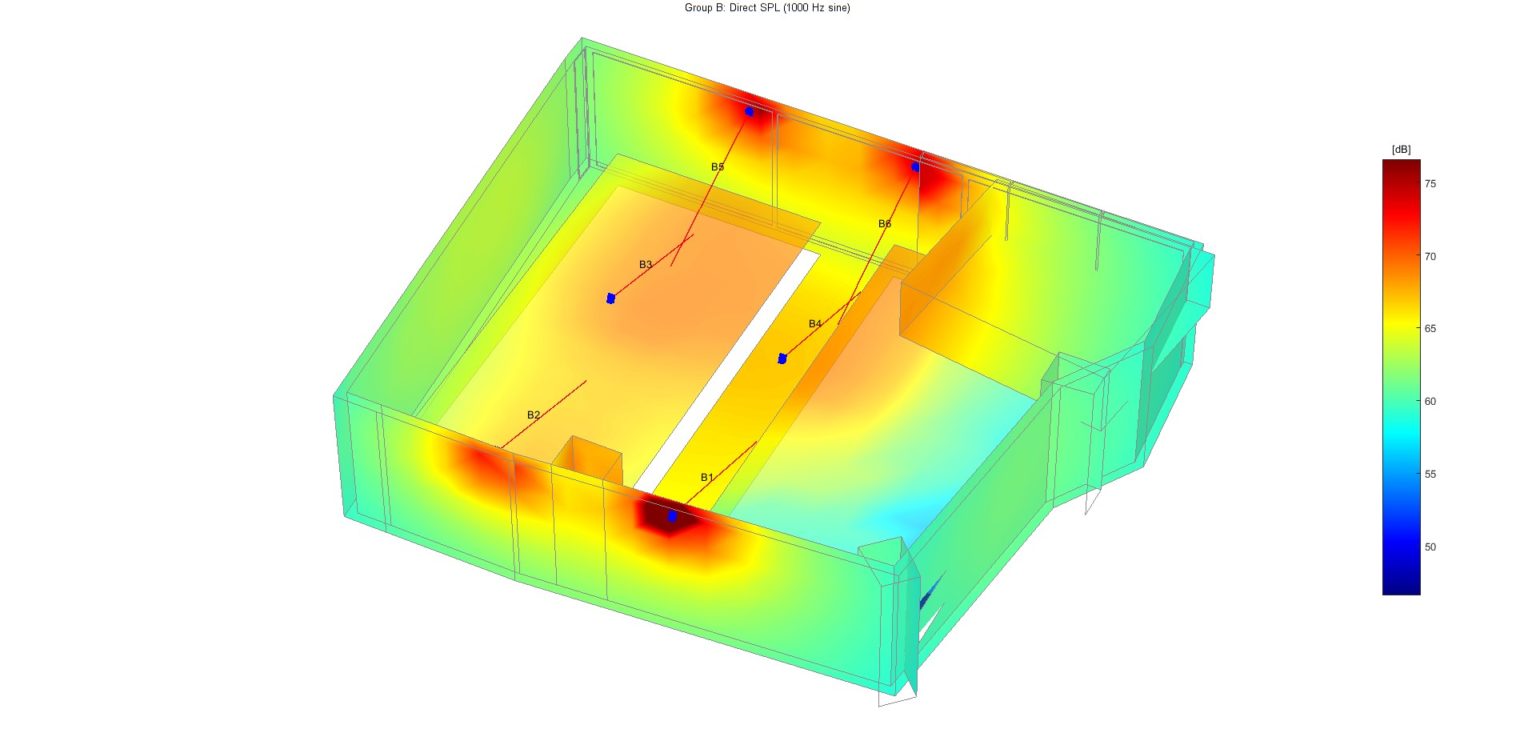
Subscribe to CX E-News
Have a problem with the sound of an install? How a room sounds? Modelling can help you… strike a pose!
Why model? (also known as: what happens when things go wrong!?!)
Effectively, modelling is the educated ‘guesstimating’ of where to place a loudspeaker for optimal sound performance. Used correctly, the process of modelling can help with superior sound performance, but that’s only the tip of the iceberg. Recapturing key stakeholder’s attention with a new way to discuss and communicate sound requirements, differentiating your comms from the rest of the pack and bringing your (audio) beliefs to the forefront are all some of the benefits of acoustic modelling.
We model for a few reasons. One, it’s a great way to take the guesswork out of things. No finished room will ever mirror the model 100%, however, without modelling, disappointment and an open cast of characters to star in the blame game all tend to come to the forefront. Modelling allows us all to get on the same page, discuss outcomes and align our vision of what the room should sound like well before the first loudspeaker is ordered.
Sound Factors
One of the main factors contributing to a pleasant sounding room is how the air (sound) moves within the room, known as ‘modes’. Modes are the movement of the sound waves that result in some frequencies being amplified while others seemingly just disappear. The two most relevant modes are Axial and Tagential. They can be identified audibly by most ‘un-common’ sound reactions within a space. Is a space too bass-y or bright? There is a chance that some form of Axial and Tangential phenomena is happening out of the normal tolerances.
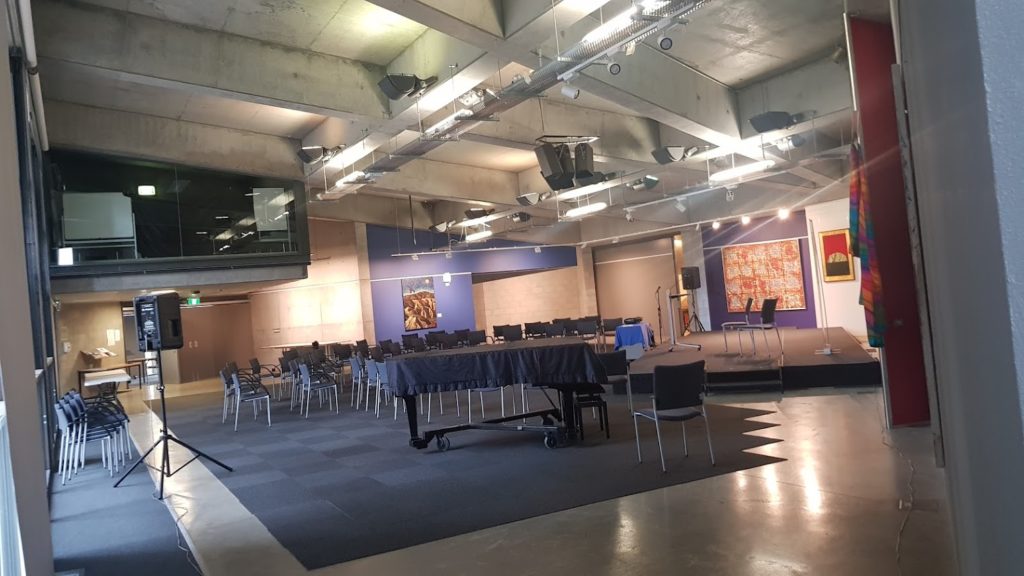
Which Mode?
Both! Axial modes refer to just two parallel surfaces and how air and sound interact with them. They are the most audible of acoustic phenomena in a square room, think a floor and ceiling, or two walls directly opposite each other in a fairly plain meeting room.
Tangential modes on the other hand, are four parallel surfaces organised into two sets, such as a floor and a ceiling, then perhaps two structural walls parallel to each other.
Axial modes are the most audible, with Tangentials about half the power of Axials (all things being equal), and a third mode, Oblique, half the power of the Tangential (but I’m already on track to smash my word limit, so let’s just focus on Axial and Tangential).
Software Tools of the Trade
Now that we know how we can measure and quantify the resulting issues of questionable sounding rooms, we can look at fine tuning the culprits (speaker placement, wattage, and DSP) to minimise this.
Knowing what a room looks like is vital, i.e. 10 x 12 x 4, however, before we build our space, it’s always vital to know what it is made from. The industry offers many wonderful software options for doing this:
• AFMG’s Reflex simulates reflections between surfaces, taking into account the actual reflection as well as diffusion and scattering of a sound wave (modes).
• AFMG’s Soundflow expands on what Reflex does. It calculates the room material’s ability to amplify or decrease volume of acoustic waves through absorption, reflections and transmission loss, as measured by material (gyprock, brick, glass, etc).
• AFMG’s EASE allows you to plonk your favourite loudspeaker into an environment and observe how it will contribute to acoustics of the room; where the coverage patterns will stop, how audible speech will be (STI) and the frequency response of the area (bass-y or bright).
While AFMG are leaders in acoustic software, many manufacturers also provide a range of tools, mostly free of charge.
JBL’s DDA is unique in its ability to allow you to model a room using an intuitive 2D drawing window that can then be exploded to 3D, along with allowing you to import a number of loudspeakers from all brands. If it’s got a CLF – common loudspeaker file – it’s in!
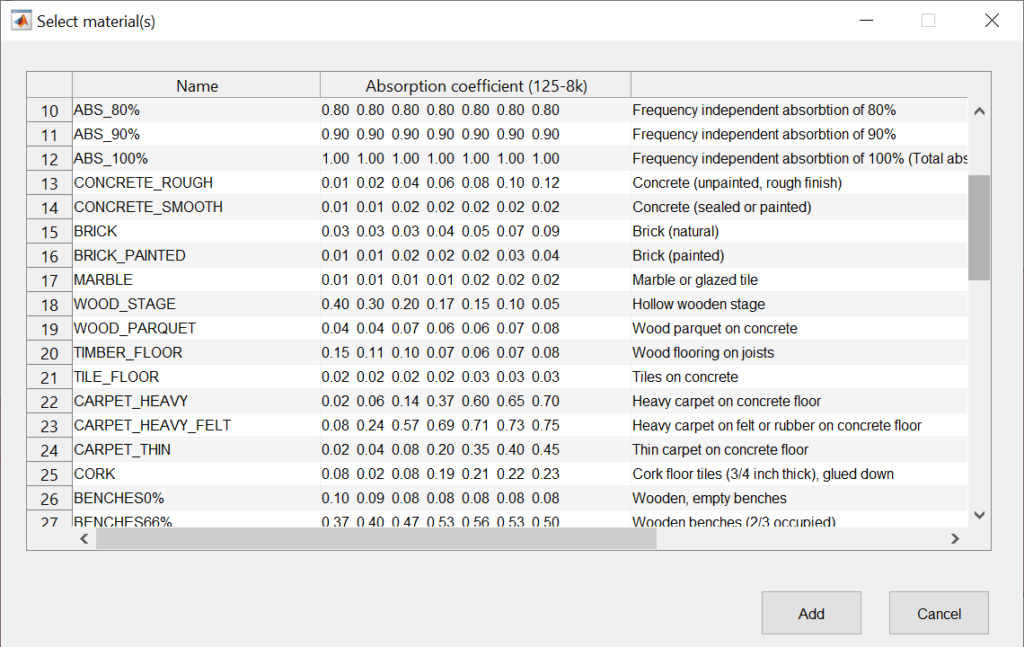
The absorption coefficient table within JBL’s DDA allows you to apply these materials to your model and visualise the results 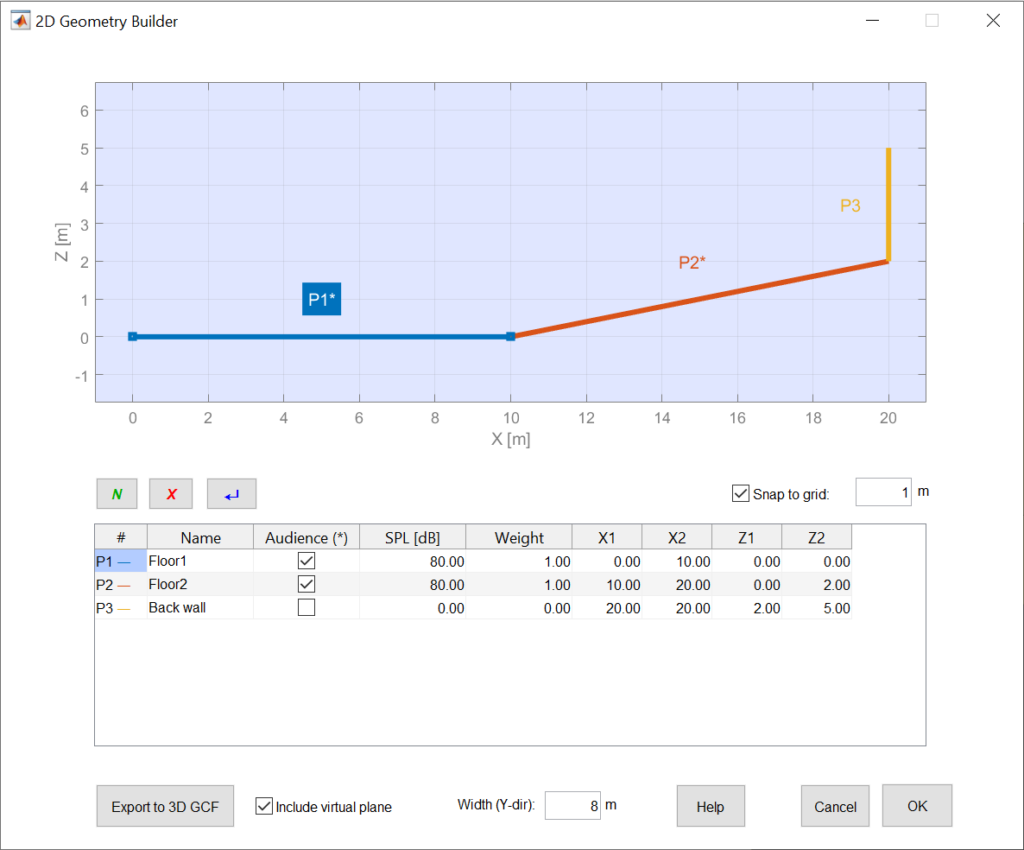
Geometry Builder within JBL’s DDA software allows you to build complex 3D spaces with a few clicks
Built on the back of a Matlab number crunching system, DDA can help you set your speaker locations, set the temperature of the room (as sound travels at 343 metres per second in air at 20 degrees Celsius) and most importantly, observe what kind of acoustic phenomena is happening as a result of it.
You can also add the all-important characteristics of your materials in DDA, with most common material’s information right there for you.
You can take it one step further with DDA by utilising Trimble’s SketchUp program; a free web version exists to get you started.
SketchUp takes many of the detailed tools used for CAD and simplifies them, allowing you to create to-scale drawings of your environment, including recess points, curves and bends and everyone’s favourite, the hanging glass chandelier reflector.
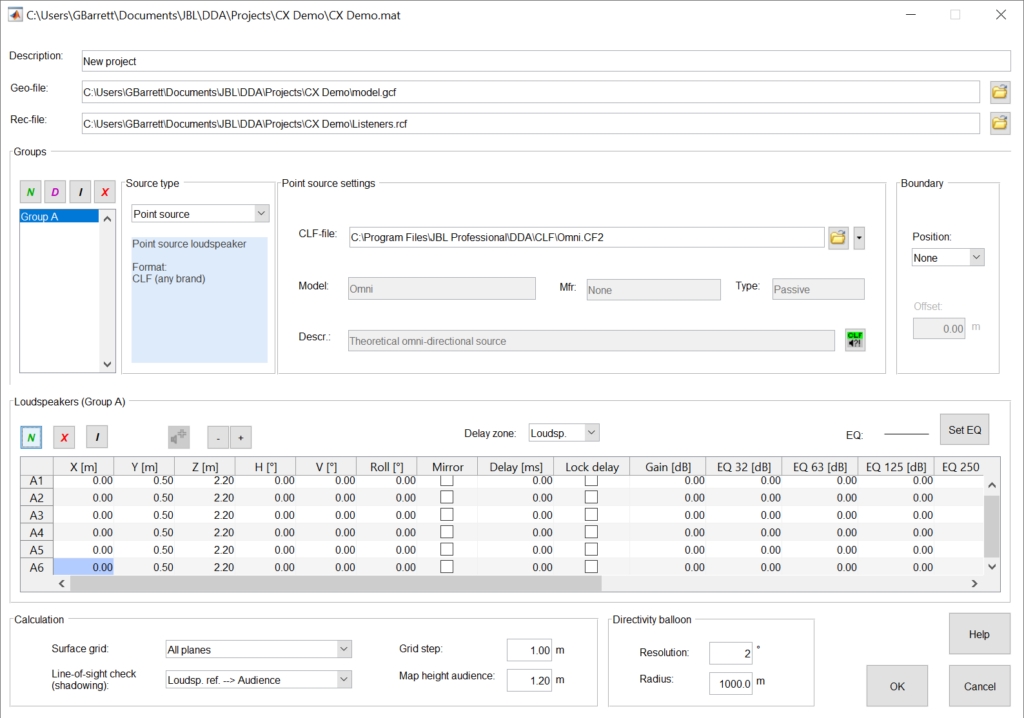
The DDA setup window allows you to place any loudspeaker of your choice (CLF file compliant) into the environment to simulate the loudness, coverage, frequency response and dispersion patterns, among other factors 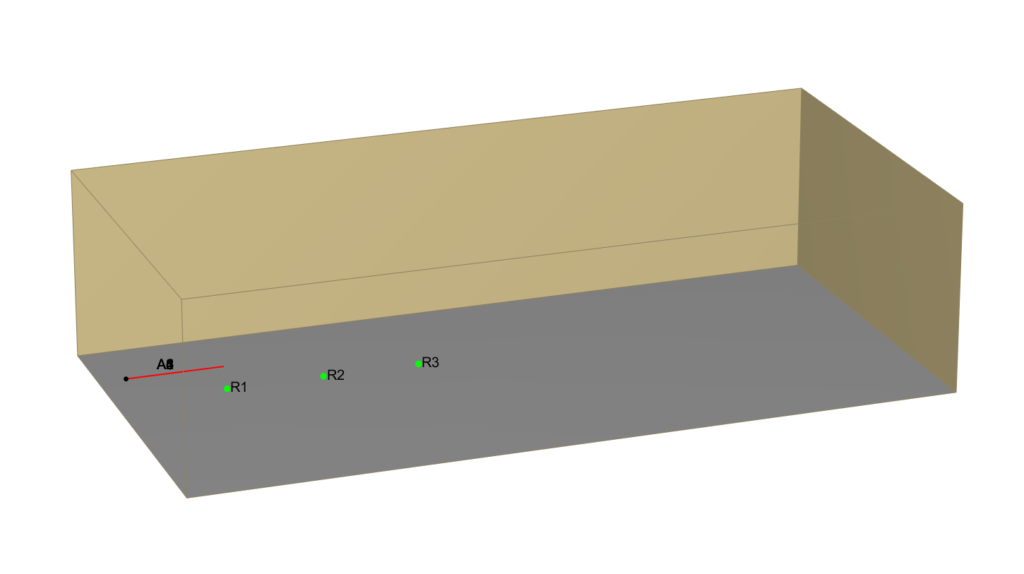
JBL’s DDA allows you to position different receivers (R1,R2,R3) to simulate the sound for listeners in different locations
By pairing SketchUp and DDA, you can come up with a no-hassle workflow that is light on the budget and allows you to accurately model, simulate and prove your acoustic environment characteristics, ensuring that as the install begins, detailed drawings around speaker placement and angles can be observed and an optimal outcome is achieved.
Taking it further than modelling
Taking it one step further, DDA allows the user to export the model back into a 3D program such as SketchUp, where using a third-party render engine such as V-Ray or Lumion, you can create super realistic images of the intended space along with how your speakers will look (and in some cases sound) in the space.
Putting this little bit of work in, especially in the early stages of a project, can really differentiate your communications from the rest of the pack with your key stakeholders, in particular, helping all parties ‘visualise’ what is happening with the acoustics in their space. This usually helps propel the sound conversation from an afterthought to a requirement, as most people can quite easily relate to an acoustic problem when it is visualised, rather than just explaining it verbally.
Conclusion
There are many acoustic and sound tools out there to help you achieve your goals, from basic modelling through to something that can help give you an edge when contributing to the discussion around sound performance of a space. What’s important though is knowing. A little bit of knowledge can be dangerous, so take the journey along with some well written pieces on the above phenomena, or consult a friend or two who can help.
Subscribe
Published monthly since 1991, our famous AV industry magazine is free for download or pay for print. Subscribers also receive CX News, our free weekly email with the latest industry news and jobs.




